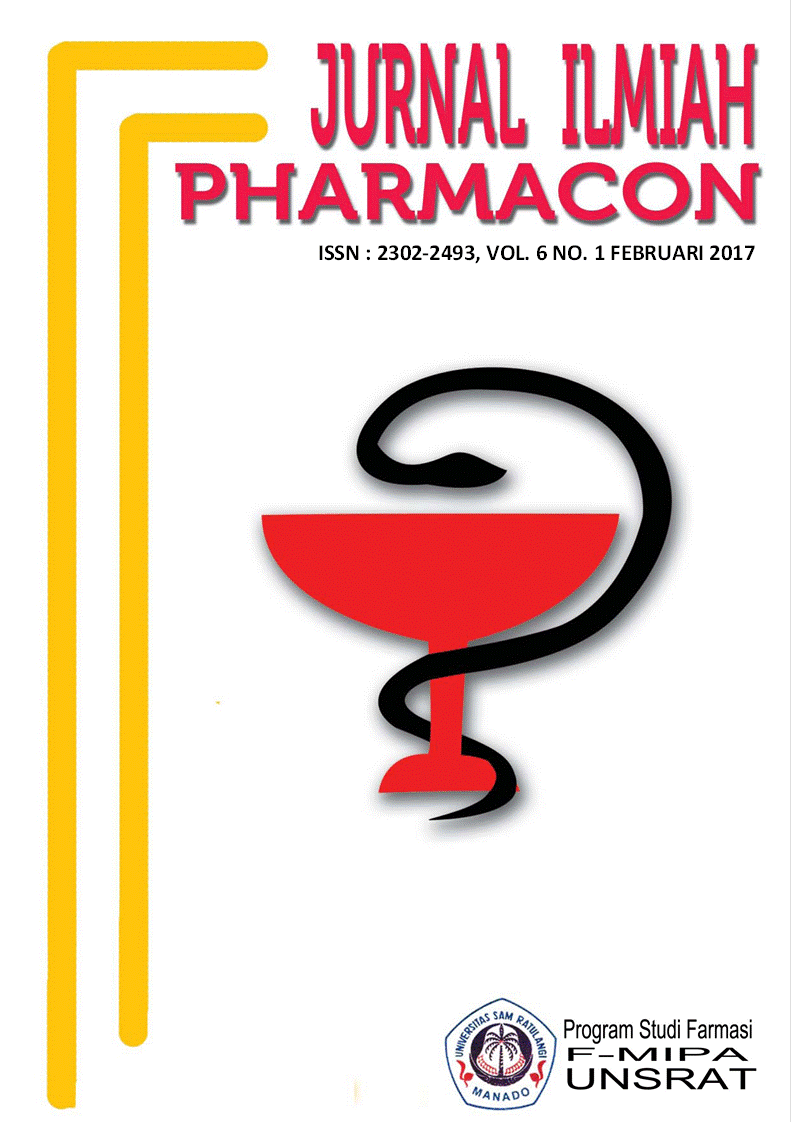PENGARUH BERKUMUR AIR KELAPA MUDA TERHADAP pH SALIVA
DOI:
https://doi.org/10.35799/pha.6.2017.15001Abstract
PENGARUH BERKUMUR AIR KELAPA MUDA TERHADAP
pH SALIVA
Â
Â
Zuthra P. Mokoginta1) , Vonny N.S. Wowor1) , Juliatri1)
1)Program Studi Pendidikan Dokter Gigi, Fakultas Kedokteran UNSRAT Manado, 95115
Â
ABSTRACT
Saliva is one factor that contributes to the development of caries, particularly in the process of demineralization. The low pH in the oral cavity will facilitate the growth of acidogenic bacteria such as Streptococcus mutans and Lactobacillus which is the main cause microorganisms in the process of caries formation. Under normal circumstances, the pH of saliva ranges from 6.8 to 7.2. Saliva is strongly influenced by changes both related to the viscosity, acidity, the composition of ions and proteins in saliva. Coconut is one of the plants that can easily founded in Indonesia, including at North Sulawesi because of the tropical climate. The young coconut water, has long been known as a healthy beverage and contains reducing sugar, potassium, sodium, calcium, vitamin C with a pH of 5.5. This study aims to find out the effect gargling with coconut water of salivary pH. This research is quasy experimental with research design of one group pre and post test using 30 samples of the 89 students population at SMP Negeri 1 Talawaan. Saliva collecting method is by spitting and the measurement of pH is using a digital pH meter. Results showed an average saliva pH before gargling is 7.33 and after gargling is 7.08. results of statistical test of paired t-test shows that coconut water can significantly reduce the pH of saliva was (p=<0.05). Conclusion Gargling with coconut water proven could decrease the pH saliva
Keywords: pH saliva, coconut water
Â
ABSTRAK
Saliva merupakan salah satu faktor yang berperan terhadap proses karies khususnya dalam proses demineralisasi. Rendahnya pH saliva dalam rongga mulut akan memudahkan pertumbuhan bakteri asidogenik seperti Streptococcus mutans dan Lactobacillus yang merupakan mikroorganisme penyebab utama dalam proses terjadinya karies. Dalam keadaan normal, pH saliva berkisar antara 6,8-7,2. Saliva sangat dipengaruhi oleh perubahan-perubahan baik yang berhubungan dengan viskositas, derajat keasaman, susunan ion dan protein dalam saliva. Kelapa merupakan salah satu tanaman yang mudah ditemui di Indonesia termasuk Sulawesi Utara karena memiliki iklim tropis. Air kelapa muda, sudah sejak lama dikenal sebagai minuman yang menyehatkan, serta mengandung gula reduksi, kalium, natrium, kalsium, vitamin C dengan pH 5,5. Penelitian ini bertujuan untuk mengatahui pengaruh berkumur air kelapa muda terhadap perubahan pH saliva. Jenis penelitian ini yakni quasy experimental dengan rancangan penelitian one group pre and post test menggunakan 30 sampel dari populasi 89 siswa SMP Negeri 1 Talawaan. Pengumpulan saliva dengan metode spitting dan pengukuran pH saliva menggunakan pH meter digital. Hasil penelitian menunjukkan rata-rata pH saliva sebelum berkumur 7,33 dan setelah berkumur 7,08. Hasil uji paired t-test menunjukkan bahwa air kelapa muda dapat menurunkan pH saliva secara signifikan (p=<0,05). Simpulan: Air kelapa muda berpengaruh menurunkan pH saliva.
Kata kunci: pH saliva, air kelapa muda
Â
Downloads
Published
How to Cite
Issue
Section
License
Authors who publish with this journal agree to the following terms:
- Authors retain copyright and grant the journal right of first publication with the work simultaneously licensed under a Creative Commons Attribution-NonCommercial 4.0 International License that allows others to share the work with an acknowledgement of the work's authorship and initial publication in this journal.
- Authors are permitted and encouraged to post their work online (e.g., in institutional repositories or on their website) prior to and during the submission process, as it can lead to productive exchanges, as well as earlier and greater citation of published work (See The Effect of Open Access)










